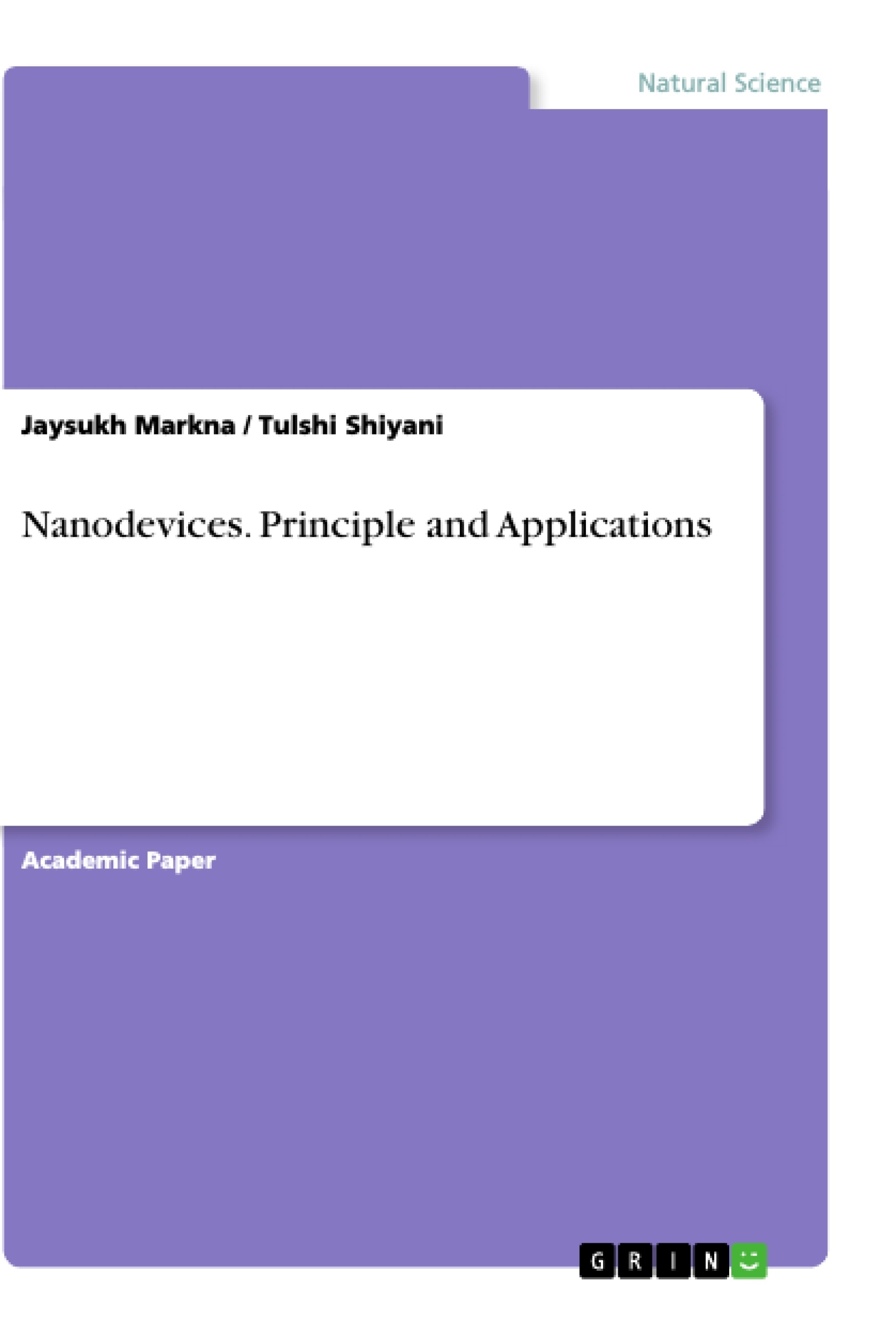This book can be useful for an academic course on nanoscience and nanotechnology. This book is very useful for the beginner in nanotechnology and nanoelectronics. The book is divided into seven chapters:
The first chapter contains the introduction of nanodevices, definition and classification of nanostructures materials and nanodevices.
The second chapter contains the detailed summary of the semiconductors and various semiconductor nanodevices. This will be helpful to study the changes occur at the nanoscale in bulk materials or bulk devices when they approach the nanoscale.
The third chapter contains the introduction, principles, and applications of various quantum confined structures and devices.
The fourth chapter gives the idea about the molecular junction, single molecular devices and their applications in other devices as an incorporated structures or hybrid applications. It contains the overview of natural and artificial nanodevices. It has given the knowledge of molecular nanoelectronics.
The fifth chapter contains the overview and advanced knowledge of natural and artificial nanosensors. It explains the various nanosensors and their applications.
Table of Contents
- CHAPTER 1: NANODEVICES-AN INTRODUCTION
- 1.1 Nanodevices
- 1.1.1 Classification of nanodevices.
- 1.1.2 Nano ordered Material systems.
- CHAPTER 2: SEMICONDUCTOR NANODEVICES
- 2.1 Introduction to Semiconductors.
- 2.2 P-N junction diode
- 2.3 Bipolar junction Transistors (BJTS): NPN and PNP transistors
- 2.4 Field effect transistor (FETs)
- 2.4.1 Junction FET...
- 2.4.2 Metal Oxide Semiconductor FET (MOSFET)
- 2.5 Nanoscale MOSFET
- 2.5.1 Carbon nanotube FET (CNFET)
- 2.6 Metal-Semiconductor junctions: Ohmic and Schottky.
- 2.6.1 Ohmic contact.
- 2.6.2 Schottky contact
- 2.6.3 Schottky devices
- 2.7 Single Electron devices (SEDs).
- 2.7.1 Single Electron Transistor (SET).
- 2.7.2 Single Electron Dynamics
- 2.8 Resonant Tunnelling Transistor (RTT).
- 2.9 Micro and Nano electromechanical systems.......
- 2.9.1 Microelectromechanical systems (MEMS)
- 2.9.2 Nanoelectromechanical systems (NEMS).
Objectives and Key Themes
This book aims to provide a comprehensive overview of nanodevices, covering their fundamental principles, classifications, and various applications. It caters to researchers, technical managers, evaluators, and funding providers, offering a basic understanding of the subject. The book is structured for both beginners and those familiar with nanoscience and nanotechnology, making it suitable for academic courses and self-study.
- Introduction to nanodevices and their classification
- Exploring the properties and applications of semiconductor nanodevices
- Understanding quantum confined structures and their device applications
- Examining molecular junctions and single molecular devices
- Overview of natural and artificial nanosensors and their applications
Chapter Summaries
Chapter 1 introduces the concept of nanodevices, providing definitions, classifications, and an overview of nano-ordered material systems. Chapter 2 delves into semiconductor nanodevices, covering topics such as P-N junction diodes, bipolar junction transistors, and field effect transistors, including their nanoscale variations. Chapter 3 focuses on quantum confined structures, exploring their principles and applications in various devices. Chapter 4 discusses molecular junctions, single molecular devices, and their applications in hybrid devices. It also provides insights into natural and artificial nanodevices, laying the groundwork for molecular nanoelectronics. Chapter 5 offers a comprehensive overview of natural and artificial nanosensors, exploring their functionalities and diverse applications.
Keywords
This book explores key topics such as nanodevices, nanomaterials, semiconductor nanodevices, quantum confined structures, molecular junctions, single molecular devices, nanosensors, nanoelectronics, and their respective applications in various fields.
- Quote paper
- Dr. Jaysukh Markna (Author), Tulshi Shiyani (Author), 2018, Nanodevices. Principle and Applications, Munich, GRIN Verlag, https://www.grin.com/document/490989




